One of the most important challenges on agile transformations is influencing the current culture. Culture is more than making ceremonies, creating new roles and putting Kanban Boards full with Post-It’s. Although it’s absolutely true that visible artifacts show cultural expression, values and principles, however I believe that talking and showing values on a more active way is a much healthier way to initiate a change.
The following guest blog post by my friend Johnny will show you how a small group of Scrum Masters came up with an awesome idea to radiate values and principles on an artful way. The following tutorial will show how they implemented the Tree of Teams in a one of the biggest banks in South America. Read how you can do it too!
Overview:
- Where did the idea come from?
- What is the Tree of Teams?
- Celebrating accomplishments, reinforcing commitments
- Radiating the values and principles in a beautiful way
Where did the idea come from?
We are working with four scrum teams as a part of an agile transformation initiative within an international bank in Latin-America. Each team developed their own identity, expressed on their boards and walls inside the teams´ spaces. Each team is doing several individual initiatives in order to improve motivation, ceremonies and some other processes.
However, at one point we felt that we needed to show the achievements of the teams without following the traditional metrics and charts. All Scrum Masters met to discuss and proposed ideas on how to do this. We talked from drawing a forest with stars and flowers until creating a solar system. Finally, we came to the consensus of drawing a tree after the premise that these four Scrum teams are the seed of the bank’s transformation.
| 1 | The Fifth Discipline: The Art & Practice of The Learning Organization |
Peter M. Senge
|
| 2 | Gamestorming: A Playbook for Innovators, Rulebreakers, and Changemakers |
Dave Gray
|
| 3 | Training From the Back of the Room!: 65 Ways to Step Aside and Let Them Learn |
Sharon L. Bowman
|
What is the Tree of Teams?
We began to build the Tree based on several important basic pillars: the teams, their values & principles, achievements and ideas for changing the culture.
Here you can see the result (after a lot of Colombian coffee and “empanadas”), divided into the 5 mentioned pillars:
1. Teams in the center: The Heart
We located the agile teams in the center of the tree because they are the driving engine to generate fruits. The image shows the names of the four Agile teams that we consider as the drivers for the change management:
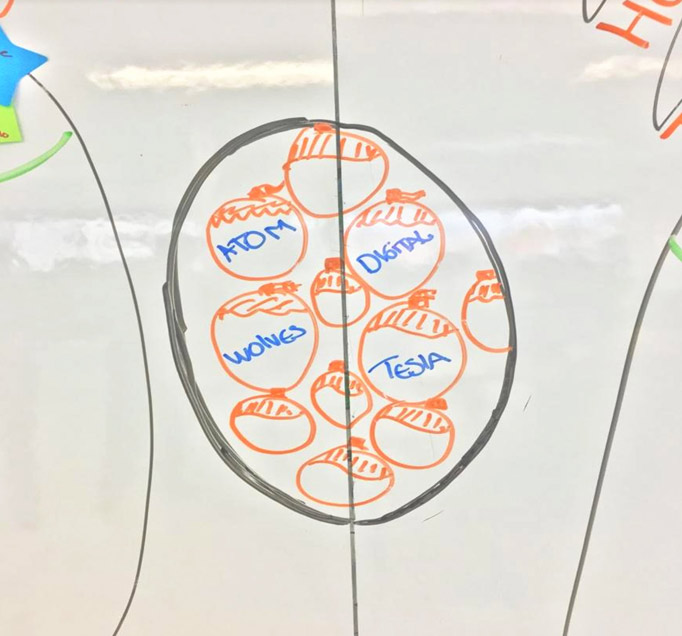
2. Roots
Roots are the pillars that support the culture we want to create. They are represented by four roots that the teams use to “radiate” and transform culture:
– Defining goals and objectives
– Showing achievements and value delivery
– Demanding a secure environment in order to grow and innovate
– Delegating actions and responsibility to viralize Culture.
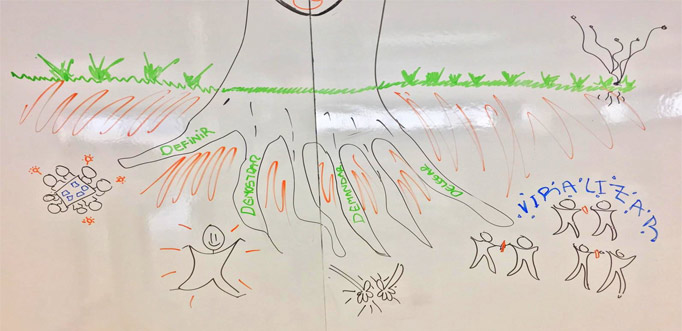
3. Branches
Each branch represents a value that we are trying to interiorize:
Humility to accept and give feedback, generosity to share our knowledge to help growing others.
Respect for the people and their ideas without overlapping out personal positions.
Honesty to say things with truth, transparency in order to generate an environment of trust.
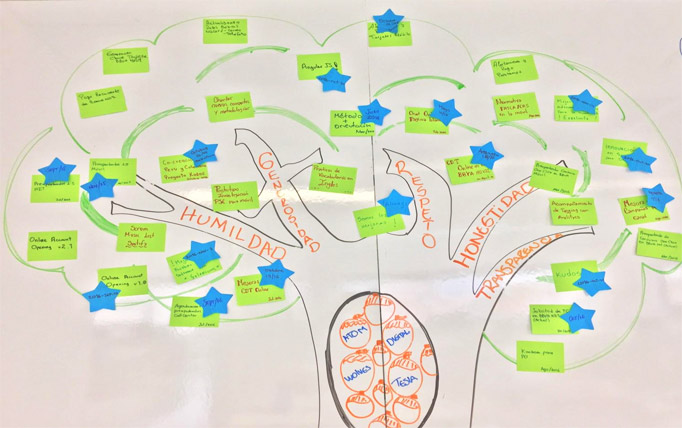
You cannot create a great culture without having values that everyone shares.
4. Fruits and Flowers
Fruits and flowers are commitments and achievements of the teams. Fruits are green and they represent a commitment between the teams and the business. A commitment could be a software product, an MVP or a cultural change initiative (normally they have an established deadline, for instance: for the next three months).
When a commitment is released (placed on the market or “On Hands of our customers”) this flourish with a blue star where we put the corresponding release date.

In this way, everything with a blue star is a value delivered to the organization, our customers or teams.
Related: Inspired: How To Create Products Customers Love
5. Ideas
We have represented the section of ideas as a watering can that is nourishing the tree. Here, any person in the organization (regardless of its role) can propose some idea to improve the culture, products, processes, practices with the only condition that it must be an item that serves people, customers, teams or stakeholders.
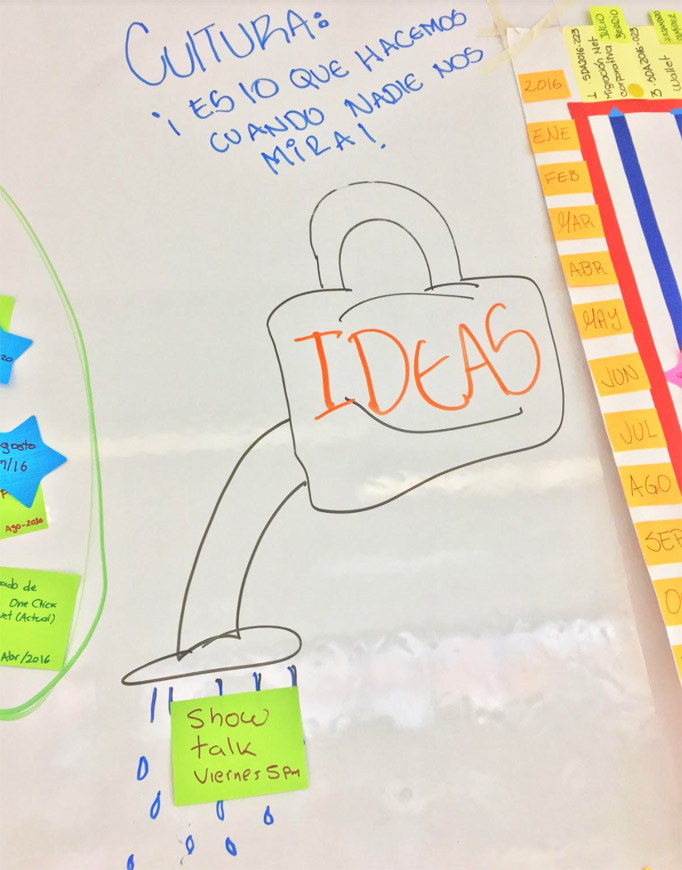
What is happening now? After three months since we draw the tree, we observed some new behaviors from the teams and managers:
Individuals and interactions
Many people came to ask with surprised faces when they saw our drawing. Any member of the agile teams could explain it to managers, business people or stakeholders but most important is that people are getting connected and are starting to talk about the relevance of our work to the organization. Now we recognize that the teams feel more empowered and committed.
Celebrating accomplishments, reinforcing commitments
There is a special atmosphere when a fruit “flourish” and one member (who received help by his/her mates) put a blue star on the tree. “We achieved a new goal” – It’s a wonderful moment for all.
Radiating the values and principles in an artful way
Showing team achievements in a different and collective way was our primary goal. However, we realized that this format surpassed our expectations and became a beautiful experiment that is changing mental models and the way of how to show progresses beyond a Burn-Down chart. This tree is an expression of the new culture that we are drawing and extending every day.
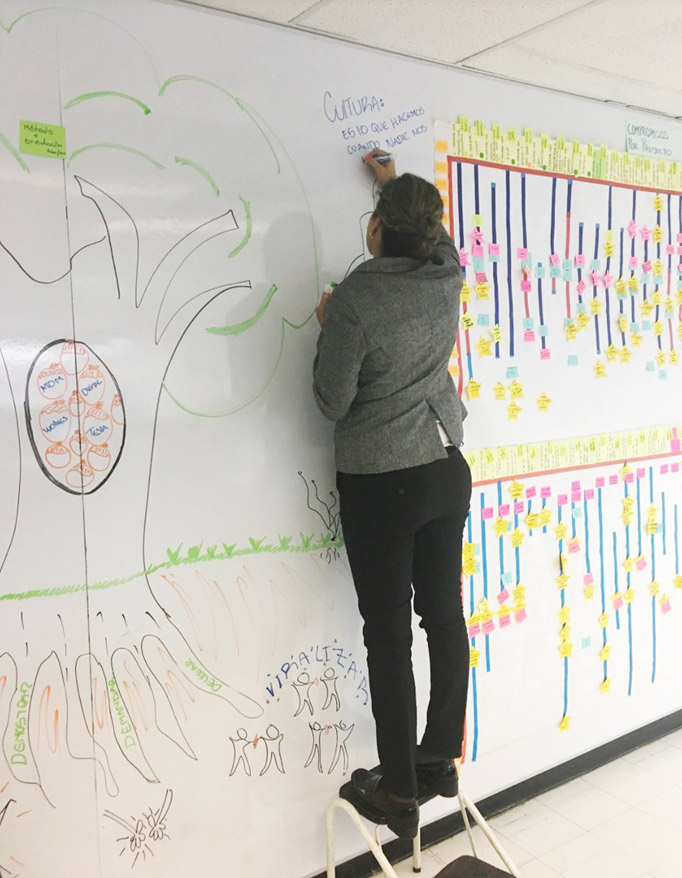
It’s the tree of all of us
This idea was born by the collaborative work of all Scrum Masters and Agile Teams. The strong desire to improve and transform our organizational culture is a breeding ground for agility.
We invite you to practice and adapt the idea with your teams. Run the experiment. Improve it and share your experience with us.
Remember: Be the change that you wish to see in the world. Thanks for reading!
Authors:
This Blog Post was written by Ana Zuried Salinas Parra, Elmer Yesid Fajardo Rodriguez, Yassef Briceño García and Johnny Ordóñez. I saw their work on LinkedIn and ask them if they would be open to make make their work transparent for the Agile Community. They agreed immediately and I’m happy to see these people thriving in Agile.
What’s your opinion on the “Tree of Teams”? Do you have further questions? Unsure on how to implement the idea? Don’t hesitate to drop your comments or questions below. The authors are open to answer all your questions!
We would appreciate your star-rating:

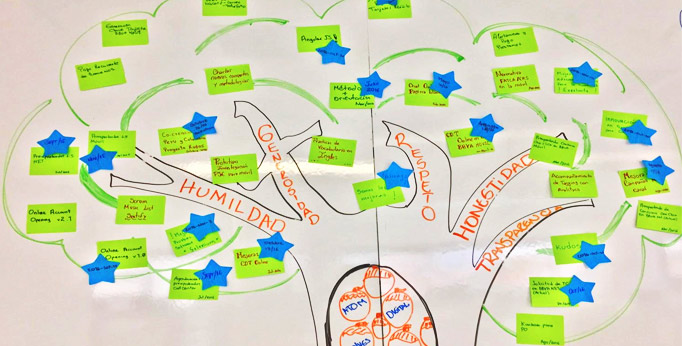
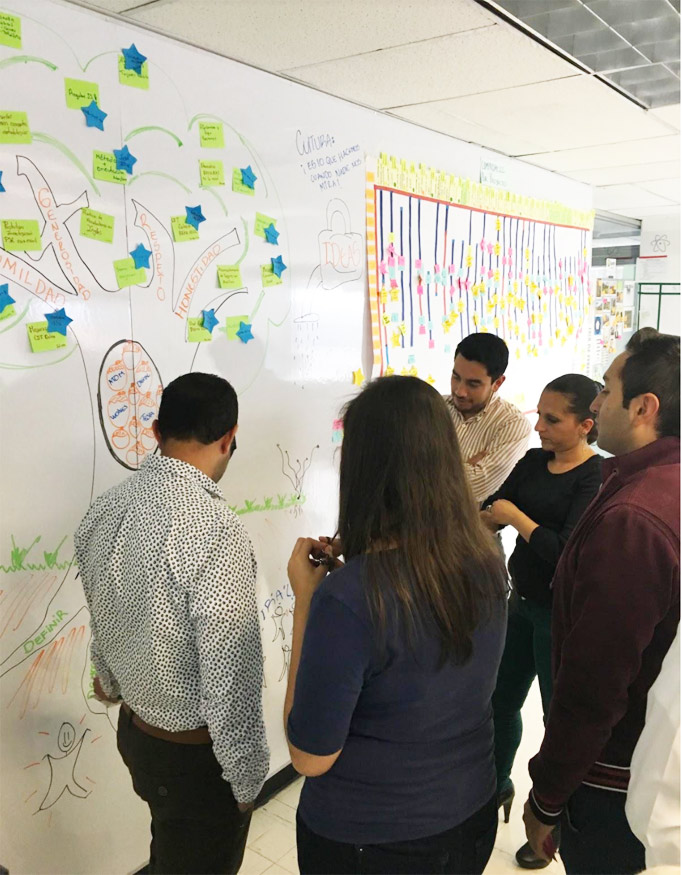

Pingback: Building An Agile And Innovative Organization In South America
Pingback: Scrum Is Bad - 5 Simple Facts That Kill Stupid Arguments About Scrum